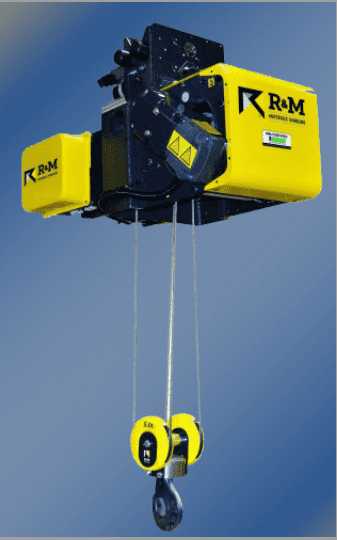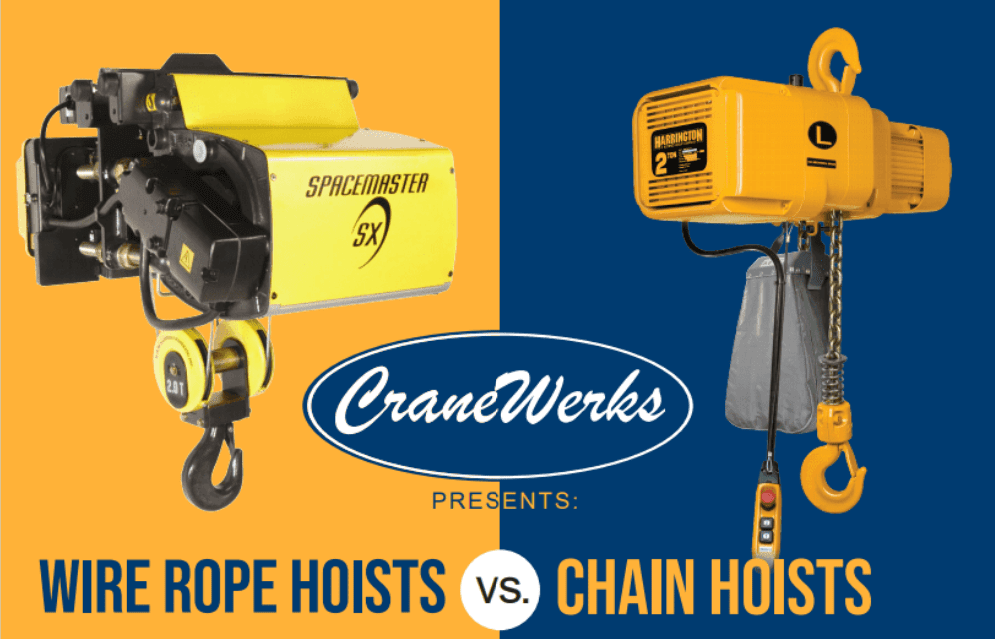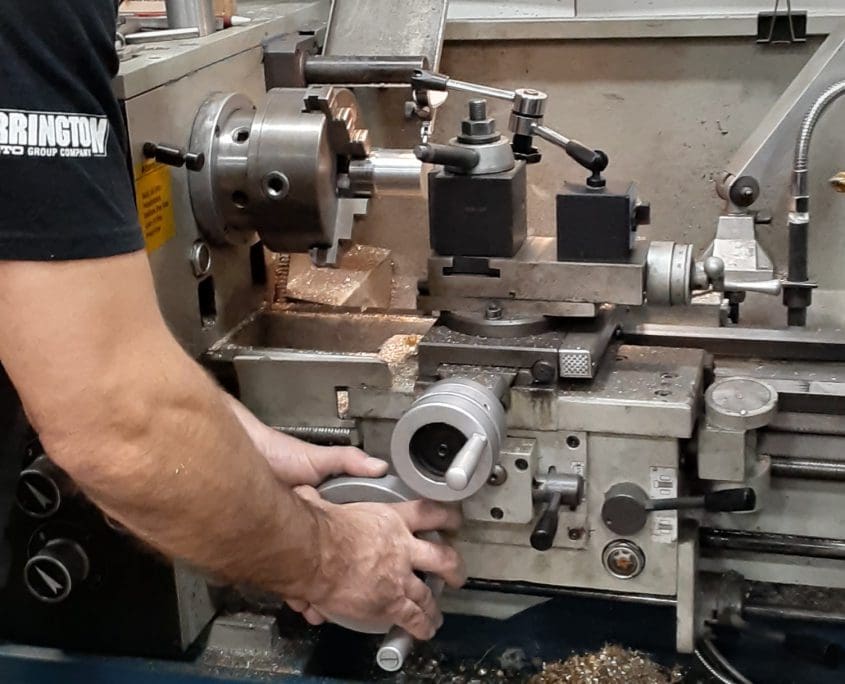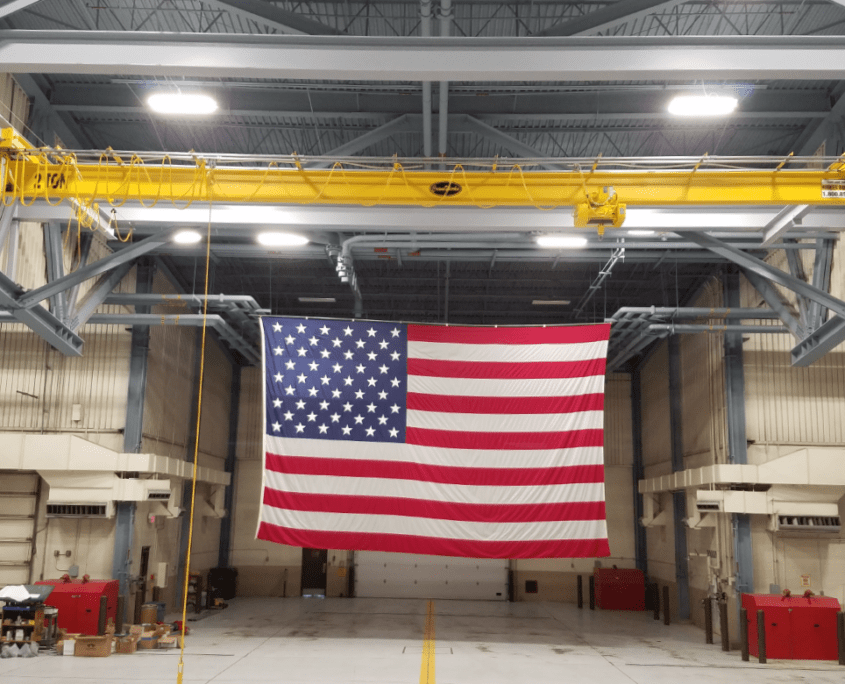Is your operation better served with a wire rope hoist or a chain hoist? Understanding your specific application and work environment are essential in answering this important question. Other factors, like lifting height, duty rating, capacity, budget and environmental constraints also play significant roles in the determination process. Here’s a head-to-head comparison to take some of the mystery out of this critical decision.
Wire Rope Hoists
Generally, electric wire hoists are better suited to lifting heavier objects (one ton to 30+ ton capacity) than chain hoists. They also excel in situations involving a high lifting height, precise positioning needs or loads that need to stay up for longer periods of time.
That said, wire rope hoists are not ideal for such manually operated lifting devices as jib cranes, smaller gantry cranes or hand-push bridge cranes. Typically, the traverse movement of these types of cranes is achieved by physically pulling on the hoist load hook or lower block. In wire rope hoists, this can frequently lead to the wire rope becoming unseated from its grooved drum or damage to the rope guide, creating a safety hazard and requiring replacement.
Wire rope hoists are also not advised for applications where minimized contamination and ease of cleaning are major concerns. Applications like clean rooms, food processing, or medical and high-tech manufacturing all lend themselves more readily to electric chain hoists are compact and typically contained in an enclosed body, making cleaning easier.
- Wire rope stores neatly on drum—ideal for mobile applications
- Rated for higher loads, typically 2-30 tons.
- Customizable for special applications due to their larger frames and open architecture
- Ideal for more lifts per hour and longer-duration lifts
- Interchangeability of components enhances maintenance and functionality


Chain Hoists
Speaking generally, the chain hoist is preferable to the wire rope for lifting lighter payloads (1/8 to 5 ton). Lighter in weight and more compact in size, chain hoists tend to be easier for users to operate than its more heavy-duty counterpart. As such, the chain hoist is typically the best choice for assembly lines, providing true vertical lifting force and wider left/right limit distances than wire rope hoists Chain hoist can also reduce maintenance and repair costs, and be used in multiple environments.
When mounted on jib cranes, gantry cranes, bridge cranes or monorail systems, electric chain hoists can provide superior coverage to that offered by wire rope hoists. This makes them ideal for hand-push trolleys operating on jib cranes, gantry cranes and hand push bridge cranes.
Depending on hoist capacity, operating speeds for chain hoists can range from 5 FPM up to 65 FPM, with lighter capacities operating at faster speeds and higher capacity units operating at slower speeds. Most electric chain hoists and motor-driven trolleys are available at one or two speeds and variable speeds.
Electric chain hoists are however not ideal for applications involving excessive dust, dirt or debris, as the lubricated chain links attract particulate, creating an abrasive compound that accelerates chain wear. This can cause additional damage to the internal pocket wheel, increasing the potential for overall equipment failure.
- Ideal for assembly lines
- Provides a true vertical lift
- More forgiving of side-pulls
- Reduced maintenance and repair costs
- Require regular inspection due to lubricants used, which can attract more abrasive debris
- Approximately 8-10 hours of operation per day, with 20-30 lifts per hour
- Compact size limits customization options



